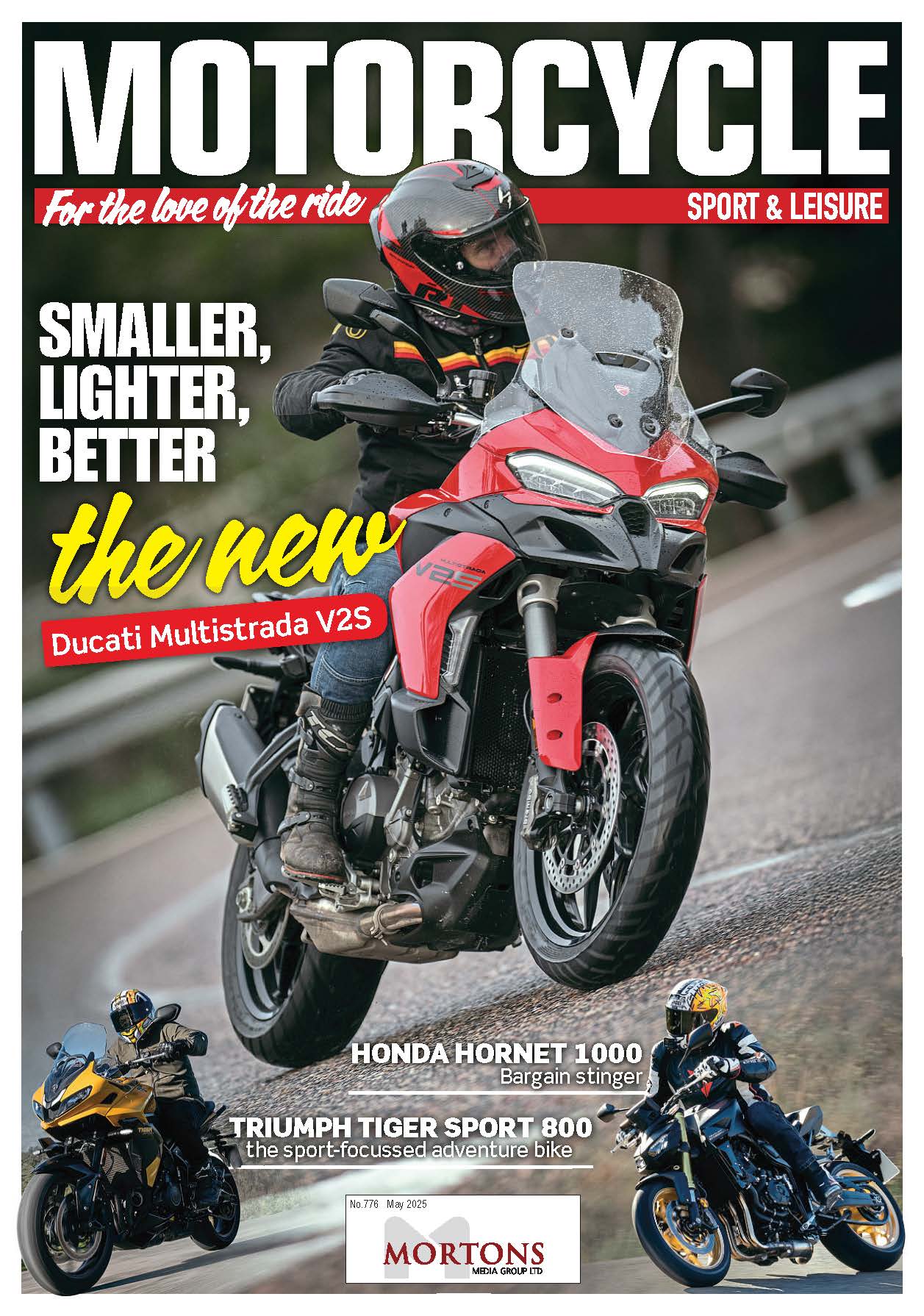Twin cylinder adventure bikes are all the rage right now, and with good reason, but with a choice of three capacities, do you need the biggest?

Words: Dave Manning / Photography: Simon Everett
The preponderance of adventure bikes that have two cylinders is no coincidence – they’re slim and light enough to have very little extra bulk when compared to a single cylinder machine, yet have the punch (and smoothness) to be able to cover big miles in comfort should the need arise. So, with three bikes in KTM’s range of adventure machinery that have a capacity greater than three-quarters of a litre, do the 890 and 1290 totally overshadow their 799cc sibling?
The parallel twin powerplant in the 790 Adventure does initially seem weak and feeble if you happen to have just stepped off the 1290 SuperAd, like I had, but in common with other Katoom models that have the 790 twin, it’s actually a really potent lump, and arguably absolutely perfect for the roads of the UK, being lightweight, smooth, perfectly capable of quick and safe overtakes at (or over, ahem) the legal limit, yet not so pokey as to bring unexpected speed or wheelies. Expected speed and wheelies, however, that’s a different story entirely!
For this model – and remember that the engine is KTM’s older parallel twin, and not a smaller version of the more recent 890 and 990 (nor an enlarged version of the 790) – KTM has actually increased the mass of the twin’s crankshaft, the theory being that a heavier crank can aid in finding grip on loose surfaces (it’s a common modification with flat track engines), as well as smoothening the power delivery and feel of the engine. It has a feistier, livelier feel than the similarly sized twins from Suzuki, Yamaha or Honda, regardless of actual peak output. Also, it has knock control, that detects when the engine is starting to run lean thanks to inferior fuels, and can alter ignition timing, etc., to suit, thus sidestepping any issues that may occur from poor quality petrol that may be your only option when travelling in remote areas. And I’m not talking about Bodmin Moor here, despite the fact that that is about as remote as most KTM owners will ever get, but ‘remote’ as in Central America, Mongolia, central Africa, etc. The flip-side of the bike being prepared for radical round-the-world rides (which the long service intervals also hint towards) is that if you happen to end up with a tank full of dodgy fuel from a garage that’s had flooded tanks or contaminated fuel (it’s not unheard of), then you’ll not melt a piston in the fast lane of the M6 on the way home…

The ‘little’ twin’s output of 94bhp also means that it can be restricted to an A2 licence compatible level (unlike the 890 engine), thus making the 790 Adventure an option for the budding adventure bike rider who has only just passed his/her test.
Like several other adventure bikes, the screen is efficient yet astoundingly noisy at the same time. Once over 50mph, you’ll be very grateful for wearing ear plugs (and you do all wear ear plugs, right? I can say from personal experience that tinnitus is no fun). It is possible to find a quiet spot by hunkering down over the tank which, while much more peaceful, is astoundingly uncomfortable… and unlike the SuperAd, the screen is not adjustable.
The seat height isn’t too tall, unlike some other adventure bikes that have gone a little too far in the Dakar Rally replica direction for ease of use for most folk, and it is adjustable (either 840mm or 860mm), and while those figures suggest it’d be tippy-toes for most, the seat is narrow enough to allow a good ‘stand over’ whilst also retaining impressive comfort. In fact, with a ground clearance of 233mm as standard, it could be dropped further with no real issues on green lanes and fire roads.
My 300-mile day on the photo shoot with Mr Everett gave no issues with comfort at all, so there’s little surprise when I say that the ergonomics are pretty close to ideal for me, being 5’11” and 31” inside leg (okay, so probably closer to 5’10” nowadays, but my legs aren’t getting shorter). My feet are totally flat on the floor at a rest; the pegs aren’t knee-crunchingly close to the seat; and the bars are a comfy height and width. The seat is perhaps a little on the firm side, which isn’t necessarily a bad thing, and if you need a touch more comfort then a Cool Cover (or similar) will give you the all-day (or all-tank) comfort you need.
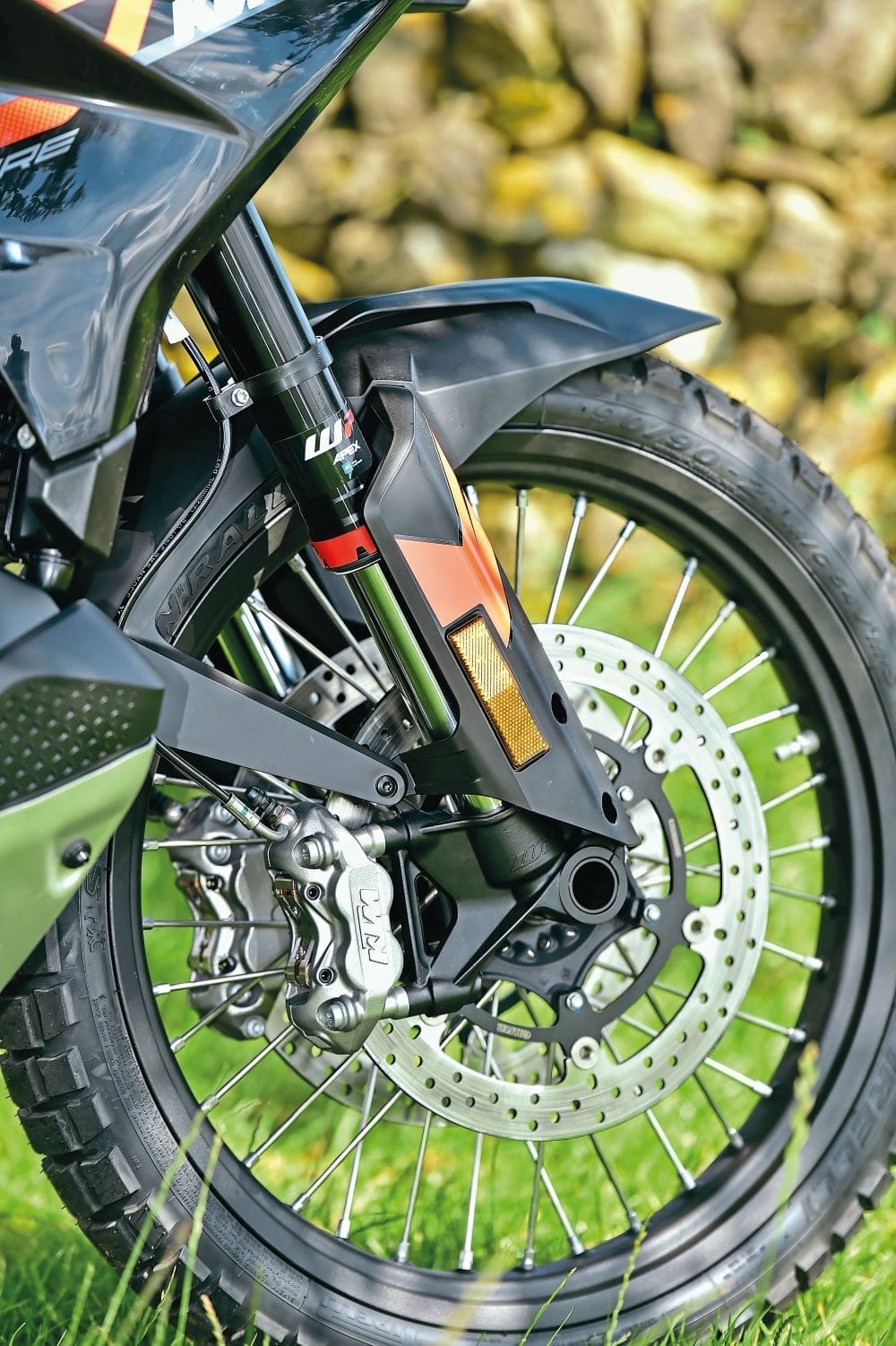
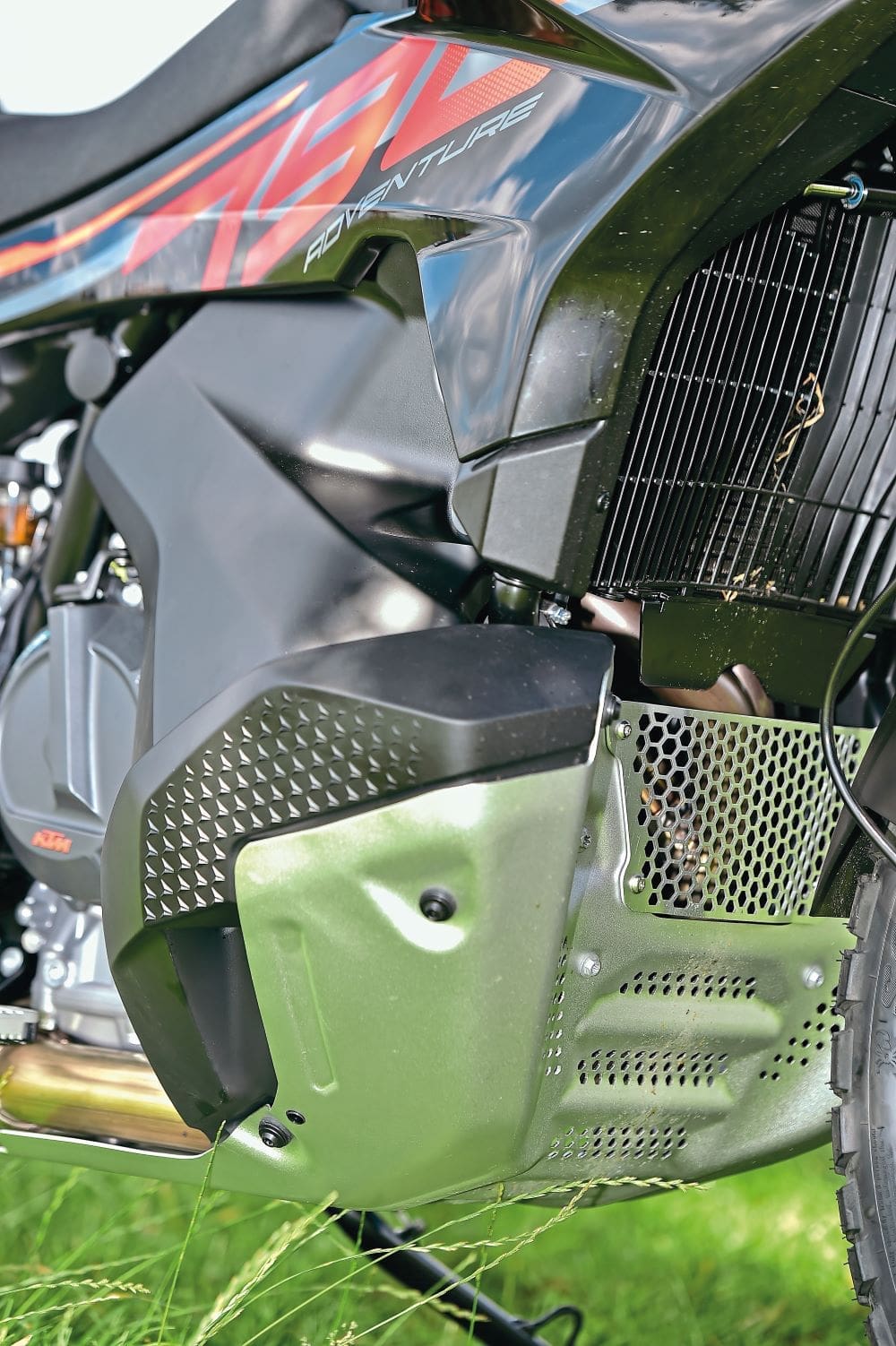
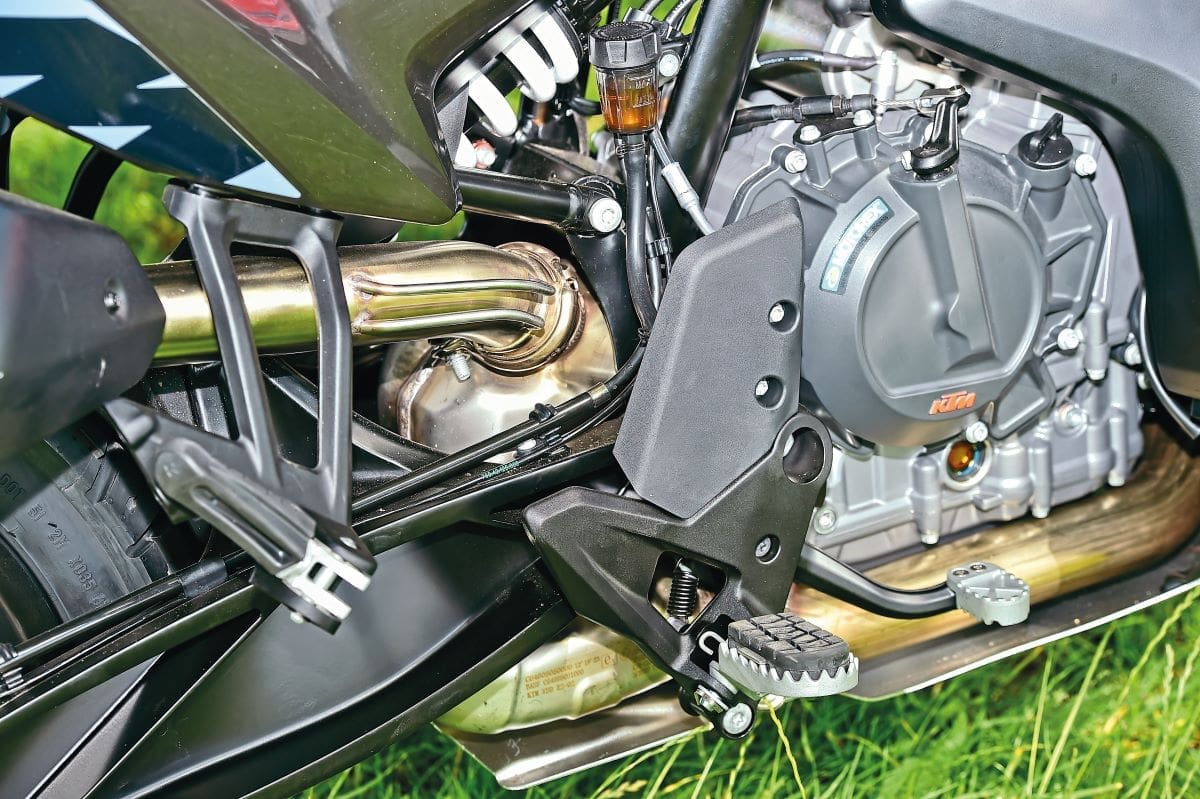
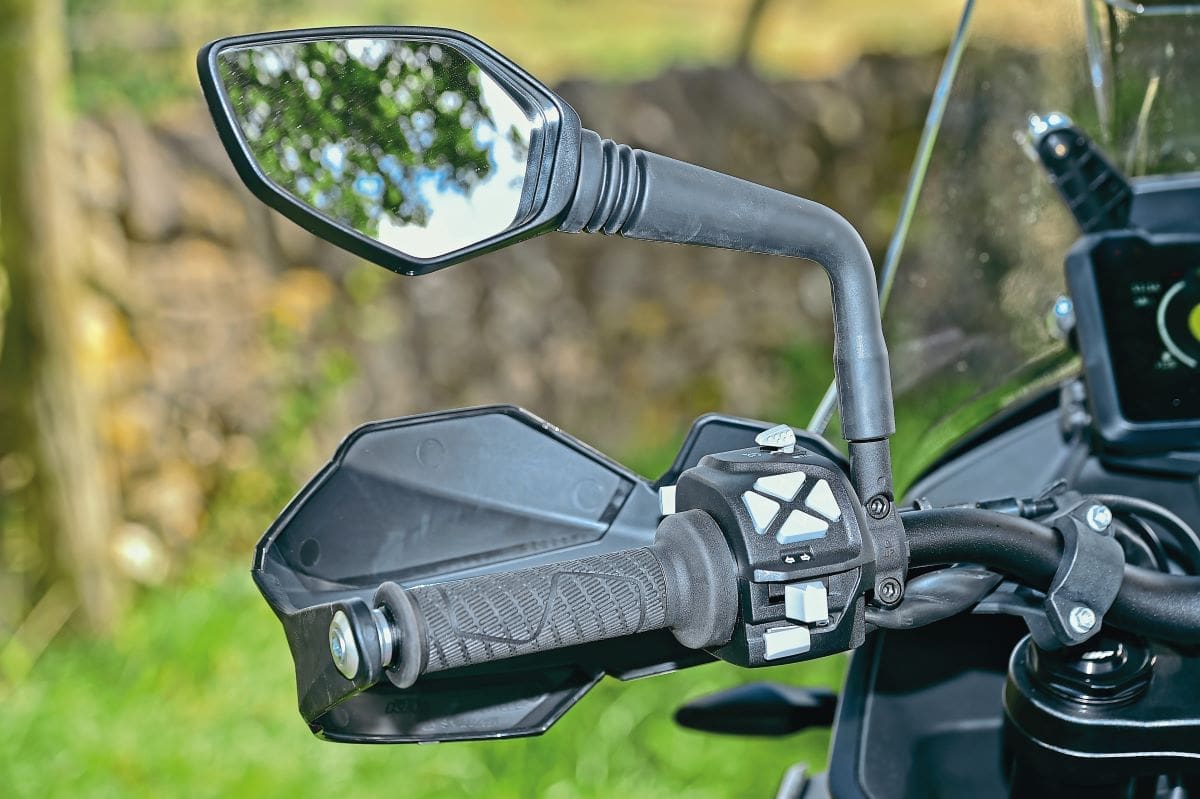
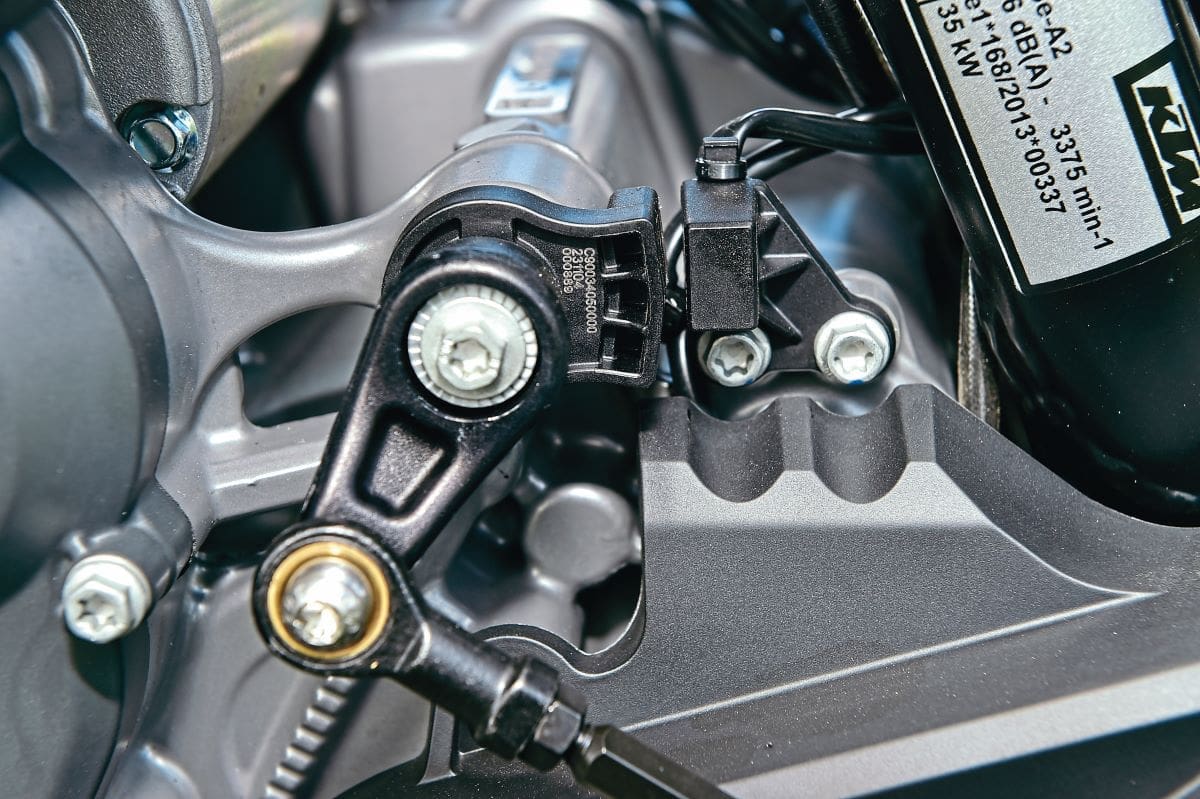
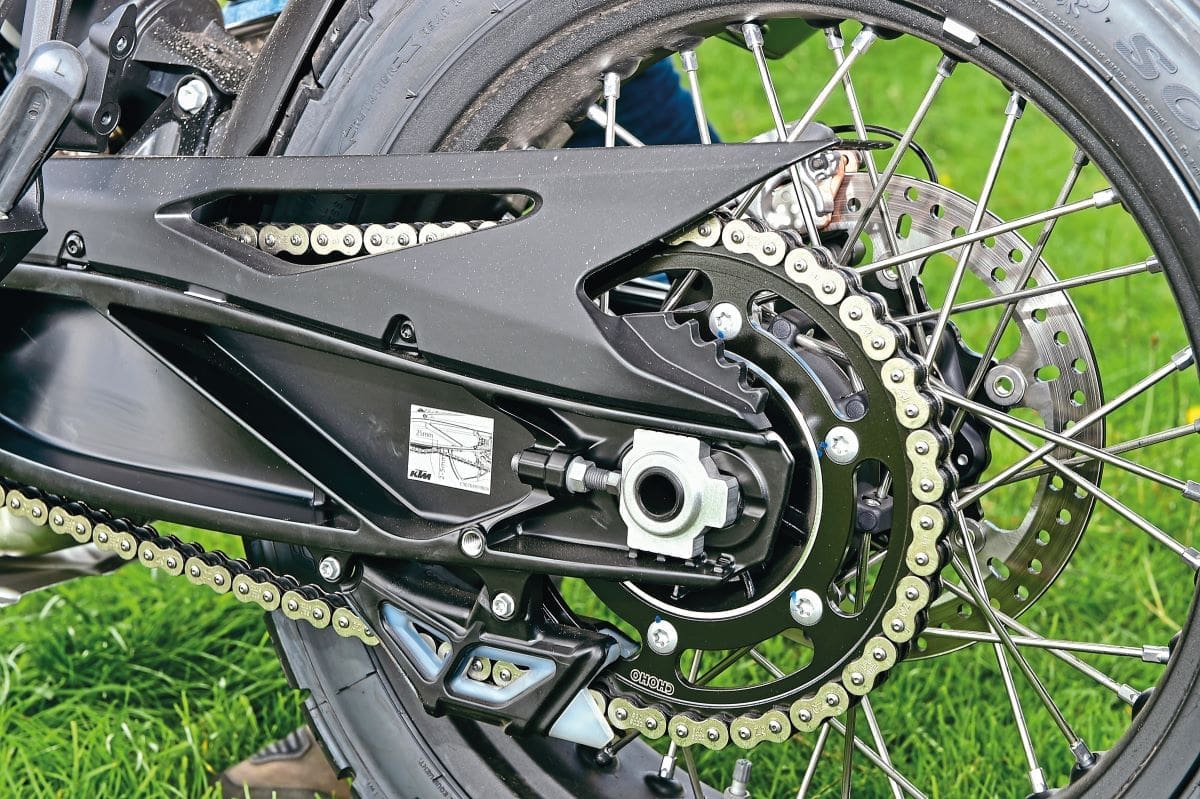
Regarding the tank, it’s a pannier-type tank that extends down either side of the engine and seems to contain rather a lot of go-go juice. The fuel gauge is, like the SMT, a bar-type readout, with an additional ’miles to go’ countdown. The former actually only shows up to half a tank, with the upper half not being shown, while the countdown is, apparently, always at 120 miles… which confused me the first time that I took the Adventure any further than just to the office as I left home with 120 miles before I needed fuel and, 93 miles later when I stopped to top up, I still had enough fuel for, according to the dash, 120 miles… and the bar gauge hadn’t dropped down to the halfway point either. Although to be fair, the ‘miles to go’ icon does say ‘greater than’ (using the > symbol).
There’s a bit of adjustability, in that as well as the seat there are three positions for the bar risers in the top yoke, and those yokes have a nice gloss black finish, as have the fork legs and tops, and the swinging arm, which looks good for durability. In fact, there’s a nice quality to the finish all round, which bodes well for long-term ownership. And right here is where I point out that the Adventure, like the 790 Duke, is built for KTM in China by CFMOTO, and (for me, anyway) it shows that the country where a bike is built doesn’t really dictate what the end quality will be like, that all depends on what the end user (or, perhaps more accurately, the end seller) wants as far as quality and price.
The fact that the 790 is built where it is does have a bearing on the end price, of course, with 10 grand bagging you a very competent machine. And, at the time of writing, the brand is offering VAT-free sales, this making the Adventure cheaper than many of its natural adversaries. There has been some cost-cutting in the specification though, with the forks being non-adjustable and the rear shock only having preload adjustability, although they’re the only areas where you can notice any kind of budgeting, and items such as the radial calipers and Pirelli tyres show that some corners have certainly not been cut!

Spec-wise, the Adventure has the usual array of electronic gadgetry, with rider modes being Road, Rain and Off-road, as well as the optional upgrade of Rally, and the fact that the electronics’ interventions to braking and engine control are masterminded by a six axis control unit (so they vary according to lean angle, etc.) is a step above the model’s competition. Certainly no corner-cutting there.
There’s a 5” TFT screen, and like so many bikes now, it can be connected via Bluetooth and the appropriate app to allow the screen to show turn-by-turn navigation, calls, music, etc., although that connectivity comes at an additional cost. It’s something of a KTM oddity, but if you buy the bike brand-new, it has the ‘demo mode’ in which all the electronics are live (including the connectivity, downshifter, Rally mode, cruise control and Motor Slip Regulation), but unless you’ve paid for these additions they all switch off after 930 miles (if that’s sounds like a peculiar distance, it equates to 1500 kilometres). You can buy the entire tech pack at just under 860 quid, or pay individually (£252.79 for the cruise control, the full quickshifter set up with downshifter/blipper is £361.51, etc.), but it does seem a little frustrating and quirky when it is just software that is already in the system. That said, not everyone will want those options, and it could be argued that it’s only fair that they don’t have to pay for them if they don’t want them…
It’s clearly not as bat-shit bonkers as its larger stablemate the 1290 Super Adventure (as tested in last month’s issue), but it still has the ‘go on, you can do better than that!’ undertone that all KTMs seem to have, egging you on from as soon as you switch them on – I find it quite appealing that even in this day and age the start-up screen reads ‘Ready to race’. And, at two grand less than the 890-engined version, it is very easy to ask the question: ‘Why bother with the 890 when the 790 is this good?’

Specification
KTM 790 Adventure
Price: £10,499
Engine: 799cc, parallel twin, water-cooling, valves, 65.7mmx88mm bore/stroke
Power: 94bhp (70kW)
Torque: 64lb-ft (87Nm)
Frame: Tubular chrome-moly steel, engine as stressed member, bolt-on steel subframe
Wheelbase: 1509mm
Rider aids: Traction control, cornering ABS, Road, Rain & Off-road rider modes (cruise control, motor slip control, Rally mode, etc., as extras)
Brakes: (F) Twin radially mounted four piston calipers, 320mm discs, (R) Twin piston floating caliper, 260mm disc
Transmission: 6 gears, chain final drive, quickshifter
Suspension: (F) 43mm WP Apex forks, non-adjustable, 200mm travel, (R) WP Apex shock, adjustable preload, 200mm travel
Wheels/Tyres: Pirelli Scorpion Rally STR
Seat height: 840/860mm
Fuel capacity: 20 litres
MPG: 56mpg (claimed)
Weight: 203kg (no fuel)
Warranty: 24 months
Service intervals: 15,000km
Contact: www.ktm.com

